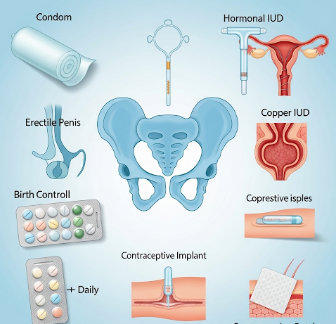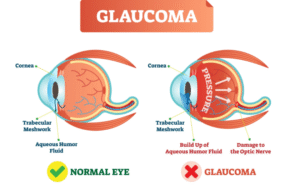Overview
Contraception refers to methods and devices used to prevent pregnancy and, in some cases, protect against sexually transmitted infections (STIs). Contraceptive options vary widely, from hormonal interventions and barrier methods to permanent procedures and fertility awareness techniques.
Importance of contraception:
- Empowers individuals to plan and space pregnancies.
- Supports reproductive health and family planning.
- Reduces the risk of unintended pregnancies.
- Can provide additional health benefits, such as menstrual regulation, reduced menstrual cramps, and acne control.
In South Korea, contraception is widely available through clinics, hospitals, pharmacies, and family planning centers, with options ranging from modern hormonal methods to traditional barrier methods.
Why It’s Done
Contraception is used to control fertility, improve reproductive health, and support lifestyle and medical needs.
Common indications include:
- ➤ Preventing unintended pregnancy.
- ➤ Spacing or planning pregnancies for maternal and child health.
- ➤ Management of menstrual disorders: Dysmenorrhea, menorrhagia, or irregular cycles.
- ➤ Reduction of acne or hormonal symptoms in women.
- ➤ Protection against sexually transmitted infections (certain barrier methods).
- ➤ Support for high-risk pregnancies or medical conditions where pregnancy could be harmful.
Benefits for users:
- ✔️ Provides reliable pregnancy prevention.
- ✔️ Supports personal autonomy and reproductive decision-making.
- ✔️ Reduces stress and health risks associated with unplanned pregnancies.
- ✔️ Offers non-contraceptive medical benefits depending on the method chosen.
Alternatives
Contraception encompasses a wide range of options, each with alternatives to suit individual needs:
- ➤ Hormonal methods: Combined oral contraceptives, progestin-only pills, contraceptive patches, vaginal rings, injections, and implants.
- ➤ Barrier methods: Male and female condoms, diaphragms, cervical caps, and spermicides.
- ➤ Intrauterine devices (IUDs): Hormonal or copper IUDs offering long-term contraception.
- ➤ Permanent methods: Tubal ligation for women or vasectomy for men.
- ➤ Fertility awareness methods: Calendar-based tracking, basal body temperature, and cervical mucus monitoring.
- ➤ Emergency contraception: Pills or IUDs used after unprotected sex.
Key point: Choosing the right contraception depends on age, medical history, lifestyle, reproductive goals, and personal preferences.
Preparation
Proper preparation ensures safe, effective, and informed use of contraceptive methods.
Steps include:
- ✅ Medical evaluation: Review medical history, allergies, blood pressure, and any contraindications.
- ✅ Method selection: Choose based on efficacy, convenience, side effects, and protection against STIs.
- ✅ Education and counseling: Explain correct use, potential side effects, and backup options.
- ✅ Baseline tests (if needed): Blood pressure checks, weight, or lab tests depending on hormonal methods.
- ✅ Consent and voluntary decision-making: Ensure patient autonomy in selecting contraception.
Important: Proper preparation maximizes efficacy, minimizes risks, and ensures informed choice.
How It’s Done
The method of contraception depends on the chosen approach:
Hormonal methods:
- Daily pills, weekly patches, monthly rings, quarterly injections, or long-term implants.
- Regulate hormones to prevent ovulation, thicken cervical mucus, or alter the uterine lining.
Barrier methods:
- Male or female condoms worn during sexual activity.
- Diaphragms or cervical caps inserted prior to intercourse.
- Spermicide applied to enhance effectiveness.
IUDs:
- Copper or hormonal devices inserted into the uterus by a trained professional.
- Provide long-term contraception (3–10 years).
Permanent methods:
- Tubal ligation: Fallopian tubes are blocked or cut in women.
- Vasectomy: Vas deferens are cut or sealed in men.
Fertility awareness:
- Track ovulation cycles and abstain during fertile windows.
Duration and follow-up:
- Daily (pills), per intercourse (barrier), or long-term (IUD, implant).
- Regular follow-up ensures effectiveness and addresses side effects.
Key point: Contraception is tailored to individual needs, lifestyle, and medical considerations.
Recovery & Post-Use Care
Most contraceptive methods do not require recovery, but monitoring and follow-up are essential:
Immediate post-use care:
- Hormonal methods: Monitor for nausea, headaches, mood changes, or spotting.
- IUDs: Check for pain, bleeding, or signs of infection.
- Barrier methods: Inspect for allergic reactions or breakage.
Ongoing care:
- Routine gynecological visits for hormonal methods and IUDs.
- STI screening and education for barrier method users.
- Adjust or switch methods if side effects, health changes, or lifestyle factors change.
Long-term outcomes:
- Prevents unintended pregnancy.
- Reduces risks of menstrual disorders or hormone-related symptoms.
- Supports planned family spacing and reproductive health.
Important: Follow-up ensures efficacy, safety, and patient satisfaction.
Possible Complications / Risks
While contraception is generally safe, potential risks include:
- ⚠️ Hormonal side effects: Nausea, headaches, breast tenderness, mood changes, or weight gain.
- ⚠️ Cardiovascular risks: Rare, mainly in smokers over 35 using estrogen-containing contraceptives.
- ⚠️ IUD complications: Expulsion, perforation, or infection (rare).
- ⚠️ Barrier method failure: Breakage, slippage, or improper use.
- ⚠️ Allergic reactions: Latex or spermicide sensitivity.
In South Korea, contraceptive services are monitored by gynecology clinics and public health programs, ensuring safe, regulated access and patient counseling to minimize risks.
Treatment Options / Clinical Relevance in Korea
Contraception in South Korea is widely available, safe, and culturally supported, with healthcare providers offering personalized guidance.
Key features:
- 🏥 Hormonal methods: Pills, patches, injections, rings, and implants available with prescription.
- 🏥 Barrier methods: Male and female condoms, diaphragms, and spermicides over-the-counter.
- 🏥 IUDs and implants: Long-term reversible contraception inserted by professionals.
- 🏥 Permanent methods: Tubal ligation and vasectomy offered in hospitals or specialized clinics.
- 🏥 Emergency contraception: Available at pharmacies and clinics for unprotected intercourse.
Highlights in Korea:
- ✔️ Contraception is legally supported and widely accessible.
- ✔️ Public health programs promote safe sex and reproductive health awareness.
- ✔️ Clinicians provide individualized counseling based on medical history and lifestyle.
- ✔️ Integrated into sexual education and preventive healthcare programs.
Highlights
- ➤ Contraception includes hormonal, barrier, IUD, permanent, and fertility awareness methods.
- ➤ Indicated for pregnancy prevention, family planning, menstrual regulation, STI protection, and reproductive health.
- ➤ Alternatives depend on patient preference, including natural methods, emergency contraception, or dual-method approaches.
- ➤ Preparation involves medical evaluation, counseling, baseline tests, and voluntary informed decision-making.
- ➤ Application varies by method: daily, per intercourse, or long-term device-based interventions.
- ➤ Post-use care and follow-up ensure safety, side effect management, and efficacy.
- ➤ South Korea provides safe, accessible contraceptive options with medical supervision and public health support.













